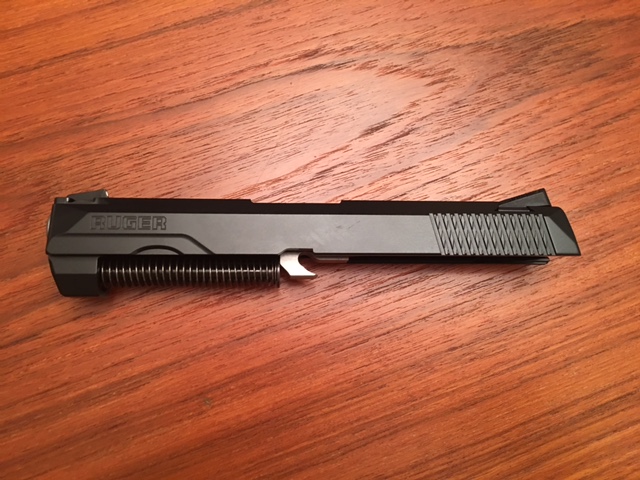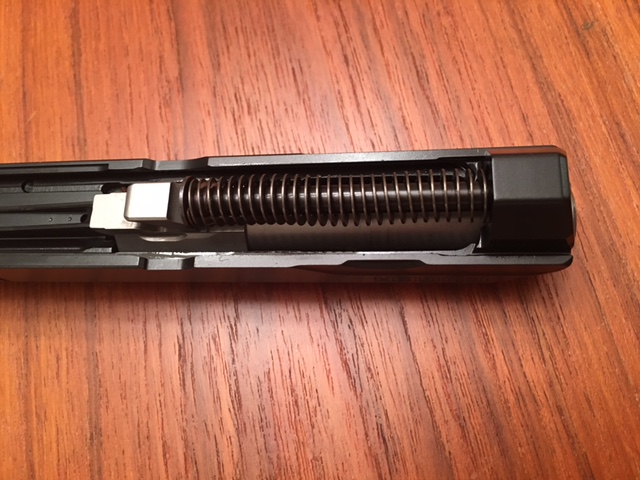
For those of you that are not gun nuts, you might not be aware of a revolution that has been happening in gun manufacturing. Guns have gone plastic.
To be fair, revolvers have not gone plastic yet, but the most popular guns, semi-automatic type handguns or pistols have gone plastic in a big way. More specifically, nylon has replaced much of the steel that was once used to manufacture guns. It all started in 1980 with a little start up gun manufacturer in Austria called Glock.
The Austrian military announced in 1980 that they were seeking a new pistol to replace the World War II era Walther pistols that they were still using. The military had a list of requirements that this new gun had to meet including that it must be a semi-automatic type and that it shoot a 9mm round.
Manufacturers were required to submit guns for testing. The Austrian military would be putting the guns through their paces, shooting thousands of rounds through them followed by stringent inspections for wear. They would also be dropping the loaded guns from a 2 meter height on to a steel plate to make sure that they would not accidentally discharge.
An engineer named Gaston Glock who had no firearms experience but had a lot of experience with polymers decided to build a prototype gun to submit to the military for testing. He assembled a team of firearms experts from the police and military to help with the design.
In a very daring move, Glock decided to use plastic for as much of the gun as possible primarily to reduce the cost of the gun. I have to imagine that this was met with some skepticism. This had not been done before.
Glock specifically wanted to use Nylon for what is often called the “frame” of the gun. The frame is the body of the gun that holds the trigger mechanism and the clip. The top part of the gun that houses the barrel is called the slide. This part would remain metal along with the clip and of course the barrel.
The prototype that was issued to the military for testing was called the Glock 17. Eight other guns from five different manufacturers were also submitted. After months of exhaustive testing, the Glock 17 emerged the winner and Glock was awarded with a large procurement contract. The initial order was for 25,000 guns.
By 1992, Glock had sold 350,000 Glock 17s all over the world including 250,000 in the United States. Glock now commands 65% of the market share for United States law enforcement. Almost every police officer is carrying a Glock these days.
Initially, the idea of a gun made of plastic was met with some skepticism. For one, a lot of people thought that these guns would be invisible to metal detectors and X-ray machines at the airport. However, this concern was unfounded. Much of the gun, including the barrel, is still made of steel. The second concern was durability. I think that law enforcements adoption of the Glock convinced people that these guns were just as durable as guns with metal frames.
For the average person buying a gun, the advantage of the nylon frame is weight savings. The current generation Glock 19 weighs just 21.16 ounces. A similar sized gun with a steel frame can weigh 34-38 ounces. In addition the nylon framed guns cost significantly less. The Glock 19 is around $500 and guns with steel frames are around $7-800.
As the public started to accept nylon framed guns other manufacturers started making them as well. At this point just about every gun manufacturer makes multiple nylon framed models. When well established American gun manufacturers Smith & Wesson and Ruger started making them, it became obvious that this was the future.
I recently purchased Ruger American 9mm pistol that has a polymer frame. I am not going to sacrifice the gun by performing an ash content test, but it appears to me to be made of a glass fiber reinforced nylon. The gun manufacturers are pretty secretive about exactly what they are using.
I disassembled it so that you could see precisely how it is made and which parts are made of nylon and which parts are still made of steel.
This is what is considered to be the frame of the gun:

A closer look at the top of the frame. The barrel and slide mechanism slides along the top of the frame when the gun is fired. The nylon has to be able to take repeated friction from the metal slide. The metal slide also gets pretty hot after repeated firings.

Here is a view through the bottom of the grip where the clip goes.

The clip is steel with a nylon piece molded onto the bottom.

The slide and barrel are all steel.

A better view of the barrel. It is underneath the spring.

Here is what it looks like assembled and with the clip inserted.

The nylon grip actually comes off and can be exchanged for grips with different contours.
Most revolver type guns are still all made of steel, but a quick Google search revealed a new Ruger light weight revolver that does indeed have a plastic frame.

Plastic has been and continues to find new applications as a replacement for metal, but there is probably no bigger metal replacement story than in firearms manufacturing. Here, plastic has shown itself to be a durable replacement for metal with less weight and cost.
